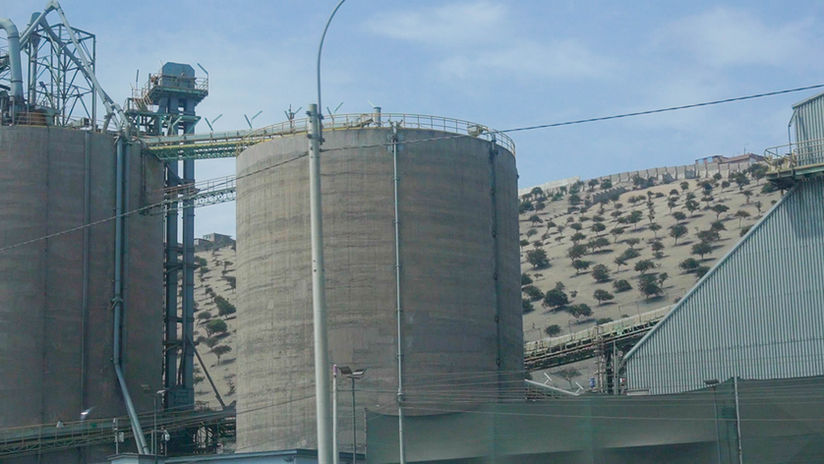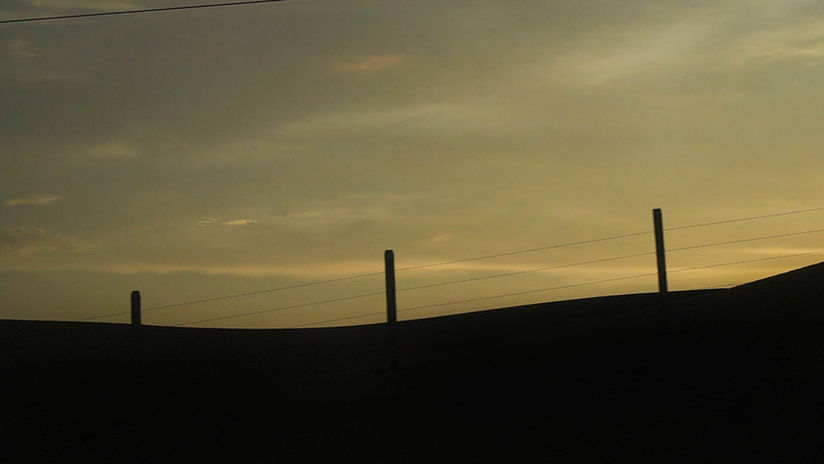Skeleton of a rational yet emotional process
- Asymmetric Psychogeography -
What is an analytical text about an analytical text?
The metatext of the metatext.
The reflections on the reflections.
The explanation of something already explanatory, but which bears a series of decisions that ultimately describe, at detail, what I wanted to show here.
For although filming and editing already speaks of ideology (of a particular gaze, a perspective), more often than not it is necessary to clarify certain things about what is shown.
A sunset is not always just a sunset and, for my work, that image has to do with the coastal horizon and the fragmentation of a city that has been landed on the desert and that seems to be diluted in the middle of the highway and the sea.


To select those hundreds of frames from the collected hours of travelling through the south of Lima, to put them together, to separate them again and again. To end up putting them in a geographical way, meaning one after the other as the miles are one after the other on a map.
At the end of this whole game, I came up with a 10-meter-long line that summarized my life experience with this ruinous desert territory that I always experienced as a remote planet.
In the rational world, this is my reflexive work; in the emotional world, it is the horizon that I lack in Switzerland’s landscape.
''...When I am far, I miss it and it makes me dizzy when I don’t see it...''

Assembling these images through my voice-over to talk about what I feel and experience, about rationality and emotionality, about desire and catastrophe.
To talk about the colors, textures and materialities of that place, which is my memory, but which is also the experience of strangeness -the uncanny.
Making sense of all this was like opening myself up to memories, theories, explanations and poetry about the desert, the sea, migration from the countryside to the city, unfulfilled promises, poverty and the precariousness of a city that sinks into the mist of neglect. But, at the same time, to that allure from which it is impossible to escape.

Parallel to this walk that I was doing with the camera, I am suddenly confronted with this huge concrete mass, and I have to look upwards in a hyper-urbanized area with a lot of movement and traffic.

This 25-floor building has been standing there for five decades unfinished: no windows, no doors, nothing; just the skeleton. But since then, it is said to be a promise to come.
They say that it will be renovated, and hundreds of medical offices will be set up to serve many millions of people. I started investigating the case and found out a lot of myths around it:
- there is a 15 cm of inclination structural error.
- the Public Health system -the owners- stole the street next to the building and that is why the Municipality doesn’t approve the permission for renovation
- 150 million soles are needed to revive it, which is too much of an investment and they don't think it is worth it.
All is gossip, everything is unknown, and I was not able to access either the plans or the documents.
For me, this building was summing up all of what I was going through in my process as well as the system and history of the targeted place.
In that moment I started playing with its shape and its material. I speculated on its plans out from Google Earth, from articles and pictures.
.






I chose to make some concrete casts preserving the original design (this is to say, the one I had been able to estimate from the outside) because I was also very attracted by its modernity, its geometry and symbols.
In the attempts to obtain the pieces, I deconstructed the building in sections and then reconstructed it. I discovered that it has a completely symmetrical shape which meant I could repeat the same shape over and over again and play with the possibilities the pieces gave me as a puzzle. If we build all of these blocks in a way, we would have the building as its real form. But what I really wanted to do is to deconstruct it, so as to construct something new.
Through this process, I also became involved with concrete, which is a material deeply burdened in the history of construction: I discovered its toxicity, its heaviness, and how exhausting it is to work with, even though I have a fascination for its final appearance. Once again, the ambiguity: between attraction and rejection.
The final result is 18 concrete blocks that function as the pieces of this unfinished building, but also as a metaphor for an unfinished project, like the territory I observe: unfinished, ruinous, half done, as if it had been abandoned. It also speaks of the promise of a country that never ends up arriving. Of the roughness of the territory, of the colors of my memory, of the parts that would have to be put together to begin to think of the possibility.

























